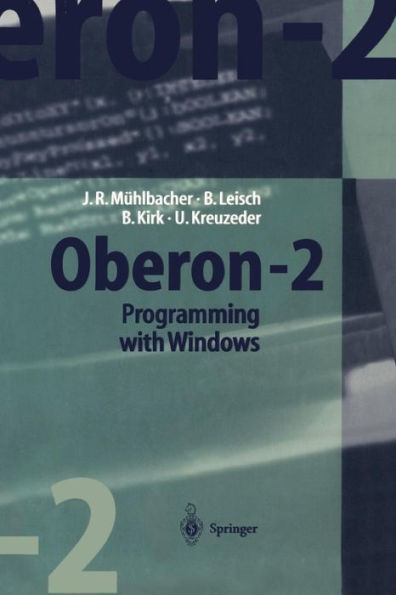Oberon-2 Programming with Windows
This book is aimed at students who need to learn the basics of programming or who are studying computing. It is a "hands on" book containing many examples which start by illustrating basic Oberon-2 language features and gradually increase in scope to cover object-oriented programming concepts and constructs. Oberon-2 is a successor to the language Pascal, which was also designed by Prof. N. Wirth [Wir71J. It has quickly become a major language used for teaching purposes. The only thing you need for successfully working through the book is to have access to a computer running Windows 3. 11 or Windows 95. The material in the book is useful to students of schools, colleges, and universities for teaching Oberon-2 and programming at an introductory level. of the book is not focused on software engineering or object The scope oriented technology; other books mentioned in the reference section already cover these topics in much greater depth. However, the examples in the book have been designed with these topics firmly in mind. Currently the term "object-oriented" is very much in fashion, having taken over from structured programming of the 1970s and '80s. In this book we have taken the view that a structured programming approach can be used to teach the fundamentals of programming algorithms. The object-oriented approach is then brought in as a complementary way to think, analyze, design and program.
1129874373
Oberon-2 Programming with Windows
This book is aimed at students who need to learn the basics of programming or who are studying computing. It is a "hands on" book containing many examples which start by illustrating basic Oberon-2 language features and gradually increase in scope to cover object-oriented programming concepts and constructs. Oberon-2 is a successor to the language Pascal, which was also designed by Prof. N. Wirth [Wir71J. It has quickly become a major language used for teaching purposes. The only thing you need for successfully working through the book is to have access to a computer running Windows 3. 11 or Windows 95. The material in the book is useful to students of schools, colleges, and universities for teaching Oberon-2 and programming at an introductory level. of the book is not focused on software engineering or object The scope oriented technology; other books mentioned in the reference section already cover these topics in much greater depth. However, the examples in the book have been designed with these topics firmly in mind. Currently the term "object-oriented" is very much in fashion, having taken over from structured programming of the 1970s and '80s. In this book we have taken the view that a structured programming approach can be used to teach the fundamentals of programming algorithms. The object-oriented approach is then brought in as a complementary way to think, analyze, design and program.
99.99
Out Of Stock
5
1

Oberon-2 Programming with Windows
372
Oberon-2 Programming with Windows
372
99.99
Out Of Stock

Product Details
| ISBN-13: | 9783540625223 |
|---|---|
| Publisher: | Springer Berlin Heidelberg |
| Publication date: | 07/24/1997 |
| Edition description: | 1997 |
| Pages: | 372 |
| Product dimensions: | 6.10(w) x 9.25(h) x 0.04(d) |
From the B&N Reads Blog
